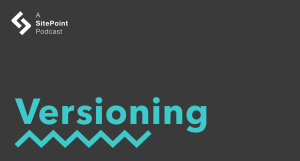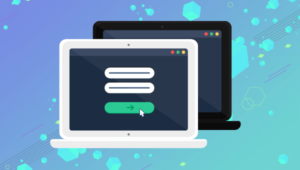- Mistake #1: Overanalyzing Instead of Getting Started
- Mistake #2: Learning a Framework Before Learning Plain JavaScript
- Mistake #3: Moving to the Next Step Too Soon
- Mistake #4: Not Breaking Concepts Into Small Enough Pieces
- Mistake #5: Attempting a Complex Project Too Early
- Mistake #6: Not Practicing Under Real-Life Conditions
- Mistake #7: Comparing Yourself to More Advanced Developers
- Mistake #8: Consuming Information and Not Actually Coding
- Mistake #9: Following Tutorials Without Understanding or Experimenting
- Key Takeaways
- Frequently Asked Questions about Common JavaScript Mistakes
A lot of people try to learn JavaScript and then give up. Then they tell themselves things like, “JavaScript is too confusing,” or worse, “Maybe I’m not cut out for web development.”
The sad part? There was no need to give up. All that was needed was a different learning approach. In this article, we’ll cover some of the most common learning mistakes people make and find out how to avoid them. Many of these tips will be applicable outside of JavaScript or even web development, so there’s that bonus too. Let’s dive in!Mistake #1: Overanalyzing Instead of Getting Started
It can be tempting to look for all the information you can get before you start learning JavaScript. If you look, you’ll find information about how JavaScript is the best thing ever or the worst thing ever, or that you need to be on this framework or that framework. You might also hear that you need to write JavaScript a certain way or else you’ll never be a “real” developer. Whether or not these points have validity, nothing is worse than the six months to a year you’ll waste agonizing instead of starting. Just type one line of code. It doesn’t have to be perfect. It can be terrible. If you get started, you’ve already passed one of the hurdles that stop a lot of people.Mistake #2: Learning a Framework Before Learning Plain JavaScript
JavaScript frameworks are built on top of vanilla JavaScript, so if you understand JavaScript, you automatically understand the fundamentals of how to use any JavaScript framework. However, if you jump straight into a framework, you’ll end up memorizing without understanding. It’s like trying to write sentences without knowing what words mean. You’ll end up memorizing random phrases instead of understanding how words work and how to put them together to make your own sentences. If you go straight to a framework it’ll be harder to learn and you’ll have a harder time adapting to another framework if you need to. If you “>learn plain JavaScript first, you have a firm basis to understand all the frameworks.Mistake #3: Moving to the Next Step Too Soon
One of the most common mistakes is to move on immediately after understanding a concept. I’ve definitely struggled with this one because it’s tempting to move forwards once you understand something. What helped was to treat each concept like a new toy; That means taking some time to enjoy what you just learned. Play around, experiment, see if you can do something new with it. You’ll learn a lot that way, and you’ll remember better as well. Once you feel like you can apply a concept in your sleep, move on. It takes a little bit more time up front, but soon it makes everything go much faster. On the other hand, if you rush, you’ll end up forgetting and having to backtrack for every little thing. That ends up taking way more time, and it can be discouraging. In fact, this is a common reason people have said they quit JavaScript.Mistake #4: Not Breaking Concepts Into Small Enough Pieces
Learning is like a staircase: If you can take one step, you can keep taking more steps until you reach your goals. When something is tough to understand, it’s often because you’re trying to take a flying leap instead of going one step at a time. Of course, it seems impossible! In practical terms, I’ve seen situations where people would struggle to understand a piece of code. I would ask them to explain it, and they’d get tripped up trying to explain the entire thing at once. I’d ask them to explain it again, but this time line by line, and that was when it made sense. If something seems confusing, there’s often a step that’s being skipped, so it helps to focus on smaller and smaller pieces until you find the sticking point. If a concept still doesn’t make sense after breaking it down, you’ll have an easier time searching for help because it’s easier to look up specific topics than vague ones.
Mistake #5: Attempting a Complex Project Too Early
People who are just starting with JavaScript often say something like “I’ll just code a quick little social network,” not realizing the extent of what’s involved. When the project proves difficult, they give up on JavaScript altogether. I’ve written about projects in more detail, but the gist is that it’s often easier to start with some fundamental concepts first. That way you have some building blocks in your toolkit for when you start doing projects. To be clear, I’m not saying to go overboard and avoid projects for a long time. I’ve just found it easier to start projects if I’ve done some fundamental things first, like showing some text in the browser or responding to a button click.Mistake #6: Not Practicing Under Real-Life Conditions
When you’re learning JavaScript, you might end up practicing under conditions that don’t match real life. For example, you might be typing inside a website’s built-in code editor, or you might be depending on a pasted file from a tutorial. These approaches can be great for learning, but it’s also important to try the material on your own. That would mean using your own text editor and coding a concept from scratch. If you don’t take a bit of time to practice each concept on your own, you’ll come to depend on the training wheels. Then you end up in a situation where you’ve spent all this time learning, but you can’t seem to apply any of it on your own.Mistake #7: Comparing Yourself to More Advanced Developers
One of the easiest ways to get discouraged is to compare yourself to more advanced people. That’s because you’re looking at where they are instead of how they got there. To use a personal example, people have seen my tutorials and asked how I wrote such clean code. They said they couldn’t write clean code like that, so maybe they just weren’t cut out for JavaScript. The truth is that my process was a mess. I experimented, made mistakes, looked things up, wrote ugly code, and finally refined everything into a presentable tutorial. People saw the polished version, and assumed the whole process was like that. I also made these assumptions about tutorial authors until I started writing my own. The point is, just focus on what you’re learning right now and you’ll get better at that. Keep repeating this process, and soon you’ll be at a point where other people wonder how you got there.Mistake #8: Consuming Information and Not Actually Coding
It’s easy to spend a lot of time watching videos and reading tutorials, but you won’t really learn unless you actually write code. The dangerous part about consuming information without acting on it is that you’ll feel like you’re learning. Then six months later, you’ll find yourself unable to apply any of what you’ve learned. Fifteen minutes of actually coding can often teach you more than an hour of consuming information.Mistake #9: Following Tutorials Without Understanding or Experimenting
When reading tutorials, it’s tempting to just copy the steps in a linear way. This approach doesn’t teach the process of solving a problem, which typically involves experimenting and taking small steps in various directions. As a result, someone who follows tutorials in a linear way will often be unable to apply the knowledge afterwards. So what’s the solution? Instead of copying each step, take time to experiment. For example, if you’re doing a slideshow tutorial, experiment with showing and hiding divs, then experiment with timing, and then try another small piece. You’ll learn much more through experiments than through the linear approach, and you’ll be able to apply it better too.Key Takeaways
If there’s one thing I want you to remember from this article, it’s that you’ll make the biggest progress by taking the smallest steps. Whatever it is you’re learning, get comfortable with the fundamentals. Experiment with what you’ve learned, and have fun. It might be difficult sometimes, but that’s good. The challenge means you’re stretching your abilities, and that’s what will make you improve. If everything is always too easy, that might mean something needs to change. I hope this has been helpful, and if there’s anything that has helped you learn JavaScript, feel free to share in the comments!Frequently Asked Questions about Common JavaScript Mistakes
What are some common mistakes beginners make when learning JavaScript?
When learning JavaScript, beginners often make a few common mistakes. One of the most common is not understanding the difference between “==” and “===”. The former is used for comparison, while the latter checks both value and type. Another common mistake is misunderstanding the scope of variables. In JavaScript, variables can have either global or local scope, and understanding the difference is crucial. Lastly, beginners often forget to use semicolons (;) at the end of a statement. While JavaScript does have automatic semicolon insertion (ASI), relying on it can lead to unexpected results.
Why is it important to understand the difference between “==” and “===” in JavaScript?
In JavaScript, “==” and “===” are both comparison operators, but they work in slightly different ways. The “==” operator compares values for equality, and it does type coercion if necessary. This means it converts the operands to the same type before making the comparison. On the other hand, “===” is a strict equality operator that compares both value and type. Understanding the difference between these two operators is crucial to avoid unexpected results in your code.
How can I avoid common JavaScript errors?
Avoiding common JavaScript errors often comes down to understanding the language’s quirks and features. For instance, always use “===” instead of “==” to avoid unexpected type coercion. Be mindful of variable scope and use local scope where possible to avoid unintended side effects. Also, always use semicolons at the end of a statement to prevent relying on JavaScript’s automatic semicolon insertion.
What is variable scope and why is it important in JavaScript?
Variable scope in JavaScript refers to the context in which a variable exists and can be accessed. There are two types of scope: global and local. Global variables can be accessed from anywhere in the code, while local variables can only be accessed within the function where they were declared. Understanding variable scope is important because it helps prevent variables from being accessed or modified in unexpected ways.
Why should I use semicolons at the end of a statement in JavaScript?
Semicolons in JavaScript are used to separate statements, making it clear where one statement ends and another begins. While JavaScript does have automatic semicolon insertion (ASI), it’s not always reliable. ASI can lead to unexpected results if it inserts a semicolon in the wrong place. Therefore, it’s a good practice to always use semicolons at the end of a statement.
What is type coercion in JavaScript and how can it lead to errors?
Type coercion in JavaScript is the automatic conversion of values from one type to another. For instance, JavaScript might convert a string to a number or vice versa. This can lead to errors because it can produce unexpected results. For example, the “==” operator does type coercion, so “5” == 5 would return true, even though one is a string and the other is a number.
How can I debug JavaScript errors?
Debugging JavaScript errors can be done using various tools and techniques. Most modern browsers have built-in developer tools that include a JavaScript console, which displays errors and allows you to interact with your code. You can also use “console.log()” statements in your code to output values and track down where things are going wrong. Additionally, using a linter can help catch errors before you even run your code.
What is a linter and how can it help me avoid JavaScript errors?
A linter is a tool that analyzes your code for potential errors and stylistic issues. It can help you catch common mistakes, such as forgetting to use a semicolon at the end of a statement or using a variable that hasn’t been declared. Using a linter can help you write cleaner, more reliable code and avoid common JavaScript errors.
What are some good resources for learning JavaScript?
There are many great resources for learning JavaScript. Websites like Codecademy, W3Schools, and Learn JavaScript offer interactive tutorials and exercises. Books like “Eloquent JavaScript” and “You Don’t Know JS” provide in-depth explanations and examples. Additionally, there are many online communities, such as Stack Overflow and the JavaScript subreddit, where you can ask questions and learn from others.
How can I practice and improve my JavaScript skills?
The best way to improve your JavaScript skills is through practice. Try building small projects or solving coding challenges on websites like CodeSignal or LeetCode. Reading and understanding other people’s code can also be very helpful. Additionally, consider contributing to open-source projects. This can give you real-world experience and help you learn best practices.
 Yaphi Berhanu
Yaphi BerhanuYaphi Berhanu is a web developer who loves helping people boost their coding skills. He writes tips and tricks at http://simplestepscode.com. In his completely unbiased opinion, he suggests checking it out.





